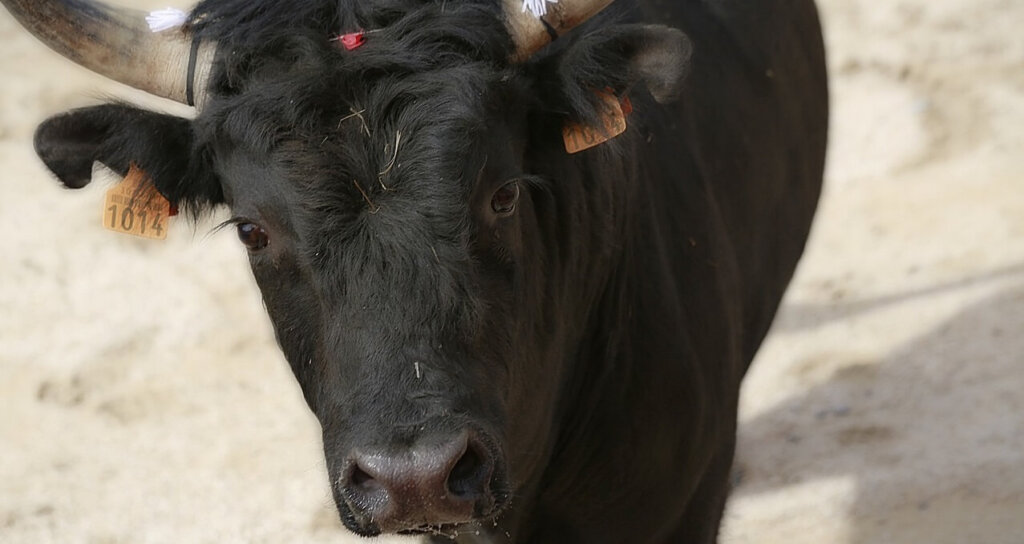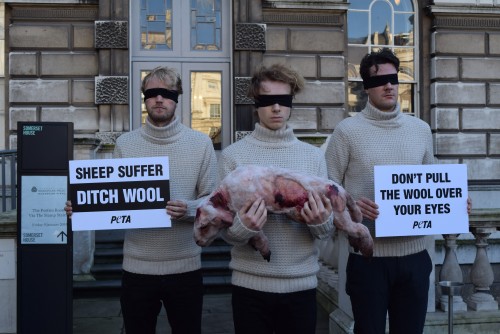Woolmark: Not Worth the Label It’s Printed On
When Somerset House in the UK hosted the finals of Woolmark’s menswear design competition as part of Men’s Fashion Week, PETA UK representatives were there with a bloodied “lamb” in tow to show people what’s wrong with wearing wool.
Everything about the production of wool is objectionable, especially the shearing process, which, as investigations have revealed, often leaves sheep battered and bloodied, and the widespread Australian practice of mulesing – a barbaric procedure during which huge swaths of skin are carved from lambs’ backsides in a crude attempt to prevent a maggot infestation.
Most people don’t know that Woolmark is a trademark owned by Australian Wool Innovation, a company whose main objective is to promote the use of wool within the fashion industry. Woolmark uses marketing ploys and gimmicks to encourage the use of wool, including the “design competition” hosted at Somerset House.
Last year, PETA US, whose motto reads, in part, that “animals are not ours to wear”, released its international exposé of the wool industry in the US and Australia – the source of 90 per cent of the world’s merino wool. The harrowing footage shows workers stamping and standing on sheep’s heads, violently punching them in the face and hitting them on the head with electric clippers and hammers. The investigators revealed that some sheep even died from the abuse, including one whose neck was twisted so violently that it broke.
These are not isolated incidents. The investigators worked undercover at more than 30 farms and wool sheds in Australia and the US over a period of several months. Taken together, these shearing crews likely shear millions of sheep every year.
It’s easy to see why such abuse is commonplace. Most shearers are paid by volume, not by the hour, which means that they are motivated to work as quickly as they can, with little regard for the sheep’s welfare. Sheep sustain gaping wounds, and workers crudely sew up the worst of them without giving them any pain relief whatsoever. Investigators never saw anyone reprimanded for abusive treatment of sheep, nor did they see that veterinary care was administered to the animals.
The only way to be sure that we’re not buying into cruelty is to leave wool – and all other clothing made from animals – out of our wardrobes. With so many humane, warm and stylish fabrics, including rayon, cotton, ramie, woven metal, soya silk, acrylic, nylon and microfibre, there really can be no excuse for supporting the violent wool industry.
Posted by Claire Fryer
Let’s make 2025 a historic year for animals





